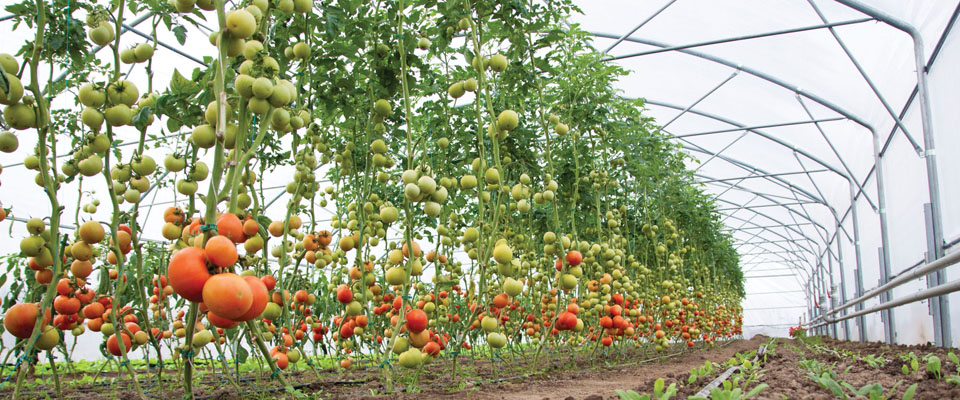Integrated Pest Management and How Our Farms Benefit from its Application?
April 25, 2017
When temperatures cool, an old house can be an inviting source of warmth for mice. And where there is one, there are more. Introduce a cat into your home and it become less inviting to Mickey, Fievel and Jerry. This is an example of a biologically controlled environment. On the farm, when a crop faces disease or pests, we have learned to use various inputs to combat and prevent crop loss.
Globally, pests consume enough food to feed an additional one billion people. Despite expensive and escalating use of chemical inputs, pests are gaining biological resistance and current solutions to malnutrition and food production are insufficient.
Across the world, societies are recognizing the negative effects of chemical pesticides, and they are creating legislation to withdraw pesticide use. Some of the major challenges facing those concerned with food security are rapid human population increase, climate change and the loss of beneficial biodiversity on the farm. For farmers, these issues combined with stricter crop protection regulations, present additional hurdles. Without the ability to use chemical pesticides, many farmers may find it difficult to adapt, having farmed a certain way their whole lives. Integrated pest management is a very intuitive and biological solution to crop loss and pesticide withdrawal legislation. IPM is adaptable to any operation in any region, making it a valuable and varied tool for farmers to implement.
What is Integrated Pest Management
The concept of IPM rests largely upon tenets of agroecology. Agroecology is concerned with the ecological impact of industrial agricultural practices. It integrates a sustainable approach to agriculture and addresses farmed areas as ecosystems. Sustainable and regenerative agricultural systems are needed to challenge the economic and environmental costs of high external inputs and create diversity in a growing world.
Agroecological IPM is an ecosystem-based strategy that focuses on low-input, long-term prevention of pests and disease through a combination of techniques, such as diversification, biological control, habitat manipulation, modifying cultural practices and use of resistant varieties that challenge conventional systems.
Building synergistic relationships between plants and animals allows optimal recycling of nutrients and organic matter. IPM helps to go beyond input substitution and creates a sustainable agroecosystem with little need for external resource input. By biologically structuring an operation, a farmer sponsors the functioning of the system at a higher level.
Examples of IPM
There are a variety of Integrated Pest Management methods that are often used in combination depending on particulars of an operation. These methods include:
Cultural methods involve minimizing the conditions that pests need to survive, i.e. water, shelter and food. Planting crops that adapt to your growing conditions, placing them effectively, as well as providing water and nutrients are a few ways to achieve cultural control. Healthy soil profiles will promote healthy plants that resist diseases, outperform weeds and are less susceptible to pests.
Physical Methods simply mean physically removing pests from a host or blocking pest access to the area. Some pest removal examples include barriers, traps, vacuuming, mowing and tilling.
Genetic methods of IPM include genetic modification and traditional breeding of pest-resistant plant varieties. An example of genetically engineered pest resistance is Bt corn or potatoes. There are also genetic techniques that can be used on pests themselves, such as sterile male insect releases to minimize reproduction.
Biological methods employ predators, parasites and pest diseases in a targeted way that suppresses pest populations. Application of predators and parasites as biocontrol for pests is handled in a few ways. The first is through the conservation and encouragement of naturally occurring biocontrol organisms via cultural methods. The second is the improvement of naturally occurring species through buying and releasing, and the third application is classical biological control, which introduces specific new pests.
Chemical methods
Not all chemicals are created equal. Conventional pesticides are synthetically produced compounds that are by definition poisonous toxins. Conventional pesticides attack the nervous system of a pest and virtually any other living thing it comes into contact with.
Using microbial pest diseases has become part of the chemical pesticide registration, a list of antimicrobial pesticides approved by the EPA, in order to challenge highly toxic chemicals. Biorational chemicals refer to pesticides that are less toxic overall and target particulars of pest biology. Gypchek is a moth virus that targets Gypsy Moths, a devastating pest. Gypcheck does not affect non-target beneficials like birds, butterflies and bees.
Another example of a biorational chemical would be insect pheromones used in conjunction with sticky traps. Pheromones are biorational chemicals produced by insects to attract potential mates. Because pheromones are not toxic, they can be used in large amounts to mislead the mating process or attract insects to a trap. Other examples of biorational chemicals are repellants, attractants and anti-feeding agents.
Future of Farming
Human beings have farmed the land for around 600 generations. Over the last two or three generations, farmers have experienced incomparable, rapid changes in mechanical and chemical intensification. An increase in farming technology and the use of chemical fertilizers has caused the agricultural industry to evolve very quickly into what it is today, but it is currently not sustainable. In order to sustain growing populations and food security, IPM offers flexible solutions that must become the norm if the agricultural industry is to survive.
Contributed by Amanda Williams

